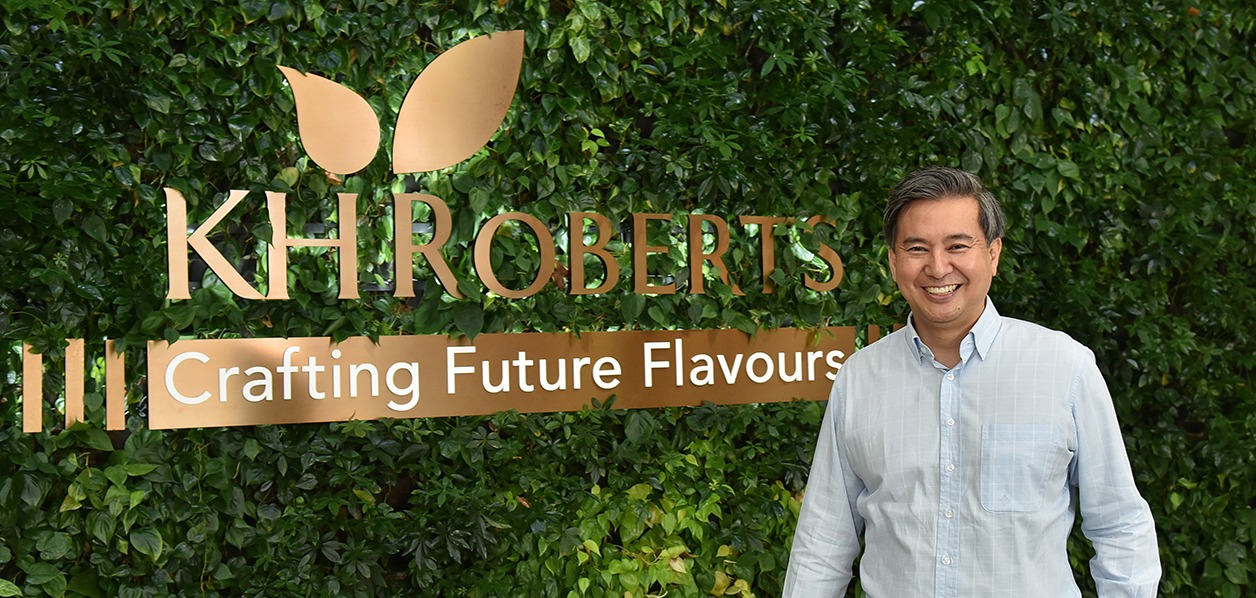A Taste for Open Innovation
Find out how a spirit of trust and collaboration is helping KH Roberts to bring brand new flavours to the market.
Every time you eat a packet of chips or scoop of ice cream, you are directly experiencing the work of a flavourist. These experts use chemistry to create the aromas and tastes of many of our favourite food products and today, the food flavours market has birthed a thriving global industry valued at US$14.6 billion on the backs of both natural and synthetic ingredients.
Businesses looking to use high quality flavours and aromas turn to flavour and fragrance (F&F) manufacturers like KH Roberts to enhance their food products. Established in 1968, KH Roberts takes pride in having a strong R&D culture that helps the company provide ingredients that improve the aromas and tastes of everything from snacks to children’s vitamins and even livestock feed. The resulting products must not only be tasty enough to delight consumers, but also safe enough to meet strict regulatory and ethical standards.
Keeping up with demand for new and better products is a challenge that KH Roberts CEO Dr Peter KC Ong knows well. Since 2010, the company has been engaging in open innovation, collaborating with industry partners to develop novel ingredients. In this interview, Dr Ong shares his thoughts on open innovation and how it has helped KH Roberts succeed in its mission to provide safe and delicious new flavours to its customers around the world.
1. What is the core competency of KH Roberts?
Taste matters when it comes to food, and it is undeniably a factor in influencing consumers’ purchase decisions in food and drinks. KH Roberts creates and manufactures true-to-nature aromas and tastes for consumer companies in diverse segments like food and beverages, health and wellness and pharmaceuticals around the world.
With diverse cultures and taste preferences, we take pride in our deep expertise in designing food flavours and customising aromas to meet the varying demands of these consumer groups. Flavour creation and process development are competencies that we built upon through years of accumulated insights on in-market consumers and specialised flavour manufacturing expertise.
2. What was the turning point in KH Roberts that convinced you open innovation was the right way to go?
Collaboration has been part of our corporate DNA since the founding of KH Roberts. As our business involves creating and producing flavour profiles that meet consumer preferences, partnering with our customers is necessary to get the right details and feedback. As in all other industries, trade secrets and intellectual properties are natural concerns when it comes to collaboration. The fear of losing always outweigh the gains.
The turning point came in around 2010 when we started our first open innovation project with a long-term strategic partner. The brief was straightforward: to jointly develop a range of flavoured ingredients leveraging the in-house expertise of both parties. The results were beyond our expectations and it turned out to be a significant additional revenue stream for both companies. Today, KH Roberts recognises open innovation as a core value that helps to enable our business and creates a network multiplier effect.
3. How has open innovation benefitted KH Roberts?
Working with partners allows us to accelerate the prototyping and trials of innovative concepts and flavours. Innovation partners very often serve as good functional sounding boards, which also helps speed up the commercialisation process.
Overall, open innovation also allows us access to more diverse ranges of new, trending consumer behaviours, novel ingredients and technologies.
4. How do you build a culture of open innovation internally and with external partners?
We constantly engage with our managers within KH Roberts to communicate the innovation framework and update projects, so they feel safe and assured of “free innovation” while not infringing on any out-of-bounds markers.
We also provide physical space in our facility for collaboration. It includes integrated labs and pilot trial plants that allow us to work with our partners and drive the cross-pollination of ideas. “Never say no” at the first instance is also an innovation mantra that we practise internally. Whether it is an internal initiative or a challenging project brief from our partners, good communication is critical in open innovation to align mutual expectations.
Additionally, we acknowledge and recognise diverse expertise and experience internally and externally, while leveraging these advantages in the creation process.
5. What are some lessons that you have learnt in the process of engaging in open innovation, whether it is through partnerships with fellow SMEs or MNCs?
We learned that great innovation takes time and that the key to successful joint innovative efforts is to identify appropriate partners who have a similar approach and beliefs. The project team can only run as fast as the slowest partner.
Not all innovation projects result in commercial viability and success. It is important for partners to embrace learnings and mistakes, and to build on or improve upon them. Most importantly, all partners as well as their staff should understand the common principles of and have a shared respect for intellectual property.
6. How has IPI enhanced KH Roberts’ open innovation journey?
Partnering with IPI has expanded KH Roberts’ network of innovation partners, technologies and resource. We also gain insight into the current innovation landscape from various perspectives. Overall, connecting with IPI enables KH Roberts to be plugged into the wider innovation ecosystem, providing opportunities for us beyond our own network.

